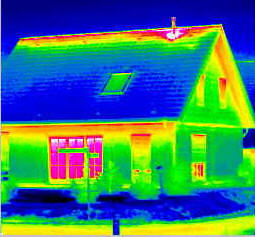
DIANE’S ELECTRICITY USAGE …
December 2015 compared to JULY 2015
800 KWH ……………………………………….. 1590 KWH
In other words, when I compare the coldest months of the year to the hottest, it’s actually costing me more to cool my home than to heat it.
Summer Energy Conservation Action Steps
Take a look at your own recent electricity bill, especially compared to the colder winter months. Then consider these recommendations from the U.S. Environmental Protection Agency to reduce the amount of energy you’re using summer as well as winter.
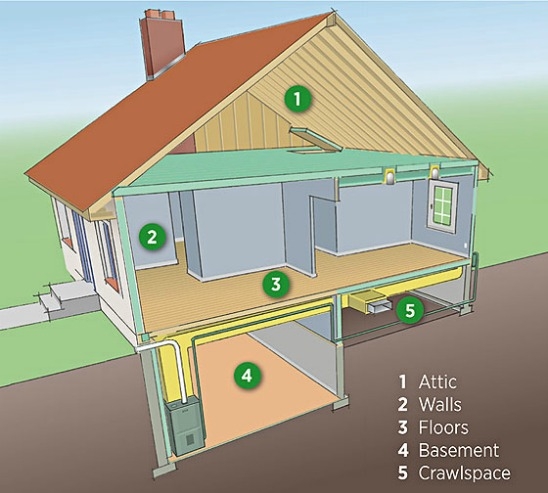
While you’re at it, insulate around cooling and heating ducts to prevent additional energy loss. That step alone could improve your HVAC performance 20%. When choosing insulation, check with the U.S. Environmental Protection Agency for the latest research on home insulation. There are many varieties available, with many health and safety pros and cons. The most common is blown-in or batting fiberglass insulation, but the “off gassing” from the fiberglass has been known to make people sick. Insulation made from denim and cellulose is also available, but some builders question how effective it is. Research is changing all the time, so make sure to read product reviews before you choose.
#2 – Weatherize. Add weather stripping to seal leaky frames around doors and windows. You can buy it in long rolls and cut it to fit without much hassle, especially if you buy the self-adhesive kind. Most hardware stores will carry a variety of weatherstripping, or you can purchase it online here.
#3 – Change your HVAC air filters. EPA’s EnergyStar program recommends changing air filters at least every three months, though monthly is better, especially in summer and winter, when your heating and cooling systems are working their hardest.
#4 – Use blinds, drapes and curtains. Even after you’ve insulated your windows, keep the sun from coming through them by drawing the curtains or closing the blinds.
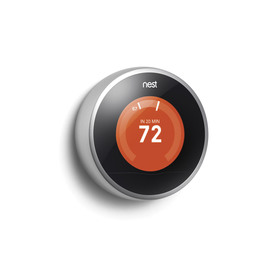
NOTE: Both DOE and my local utility recommend keeping the thermostat at 78 degrees when you’re home in the summer. If you need additional cooling, try a small table top or window fan.
SHOP OUR STORE for more energy-saving products, including programmable thermostats, weatherstripping, fans, power strips, and timers.
RELATED POSTS





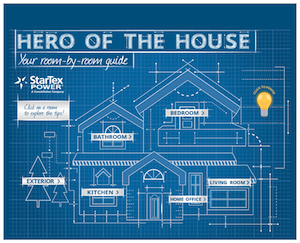
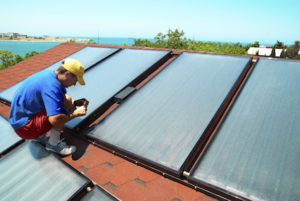









18 thoughts on “Does it cost you more to cool your home than to heat it? Why summer energy conservation makes sense.”
Something I thought of but have not yet tried is this:
If you have a basement, this is a place where the air is always cool, even in summer since it is kept cool by the earth. So why not run some vents between the basement and upstairs with a fan. In summer, turn on the fan and push cool air upstairs and an opposing fan to move warm air downstairs?
Something to consider..
Interesting idea. It’s similar to how geothermal works. Did you try it?
Diane, Thanks for reminding us that energy conservation isn’t only for winter. Given your climate, it isn’t all that surprising that your electric bill is higher in the summer than it is in the winter. Am I correct in assuming that you have electric heat? If you have another heat source (gas perhaps) then you would need to factor that into your analysis as well.
Thanks for the tips. I’m all about efficiency and reducing energy usage.
Is it expensive to install adjustable thermostats? Or is it relatively simple?
Well…I had mine installed, but if you know electronics, you could probably easily do it.
Great post. These energy saving tips really matter. Even the simplest thing, like putting up blinds and curtains, plays important role.
This site is also helpful: http://bestblindsaround.com/. Thanks for the post. Keep it up.
Thanks for the link, Mary!
Great article. You can also use passive solar techniques to give you energy savings for both Summer and Winter – see the article on my link for more information on how to this. There are ways you can save money and save the planet at the same time.
Very cool article. I recently read (and never even thought of this) but painting your roof a white color or buying lighter colored shingles… Great tips & love the blog!
Great tips! I’ve saved money following these steps. I’ve had a home inspector come and show me how I was losing energy each month. I’m now currently installing a metal roof, and this should help!
– Jessica
Great post.Conserving energy you can save money at a time…
Wrapping your hot water heater with an insulated blanket and insulating the hot water pipes will save money on utilities as well. It costs more than people realize to keep hot water at the ready 24-7, especially in colder climates.
Thanks so much for your observations. Keep ’em coming!
Great tips Diane! I’m going to send a link to your blog post to my client list, summer isn’t that far off and I think everyone could benefit from reading this. Thanks!
I’m delighted you find the information useful. Let me know what else you need to help your clients become more efficient.
A good practice is to get your roof checked before the summer hits here in Orlando, Florida. Energy efficient housing can go a long way in saving on household expenses.
I believe the faster to cool or faster to warm home depends on the location. I guess the costing will just balance out throughout the year. If it is easier to cool a home, it might be harder to warm it and vice versa.
Having a regular writing routine helps. Plus, I keep a “to do” list, so when I sit down in the morning, I know what my priorities are. Good luck!
Comments are closed.